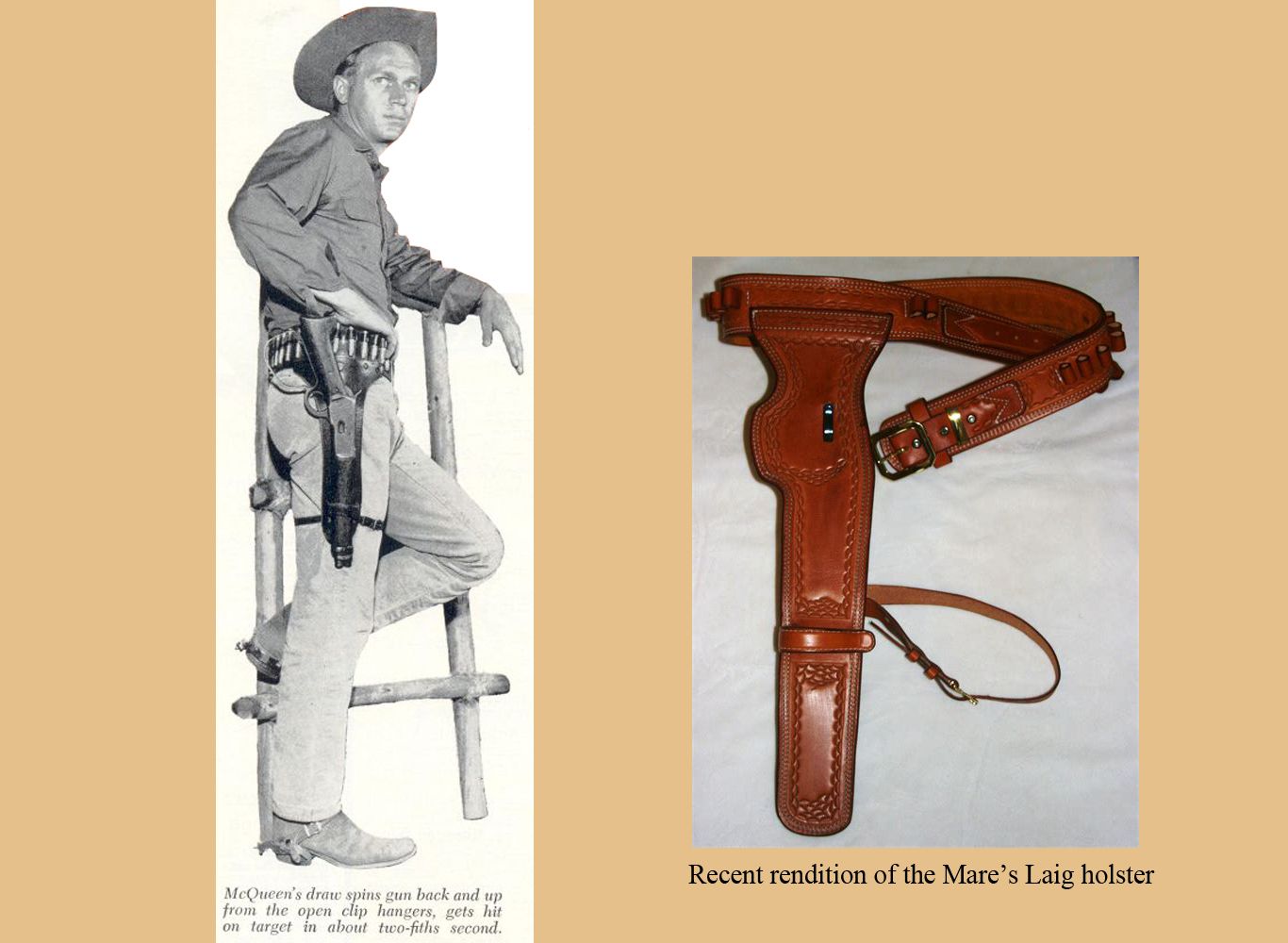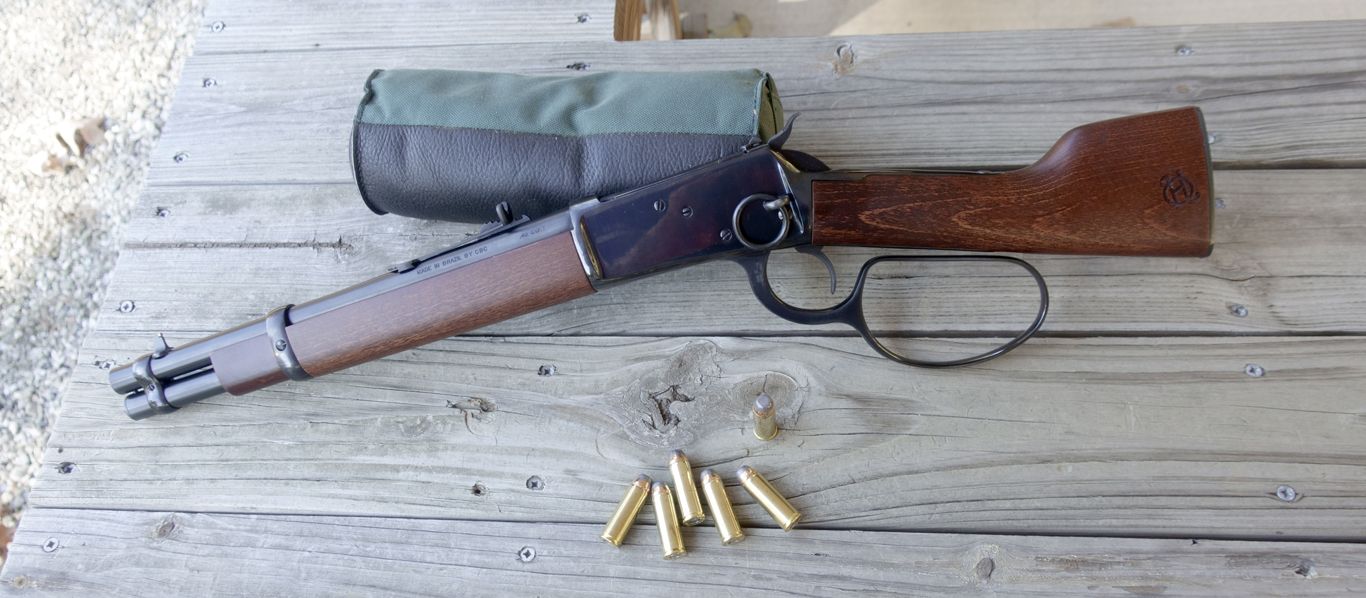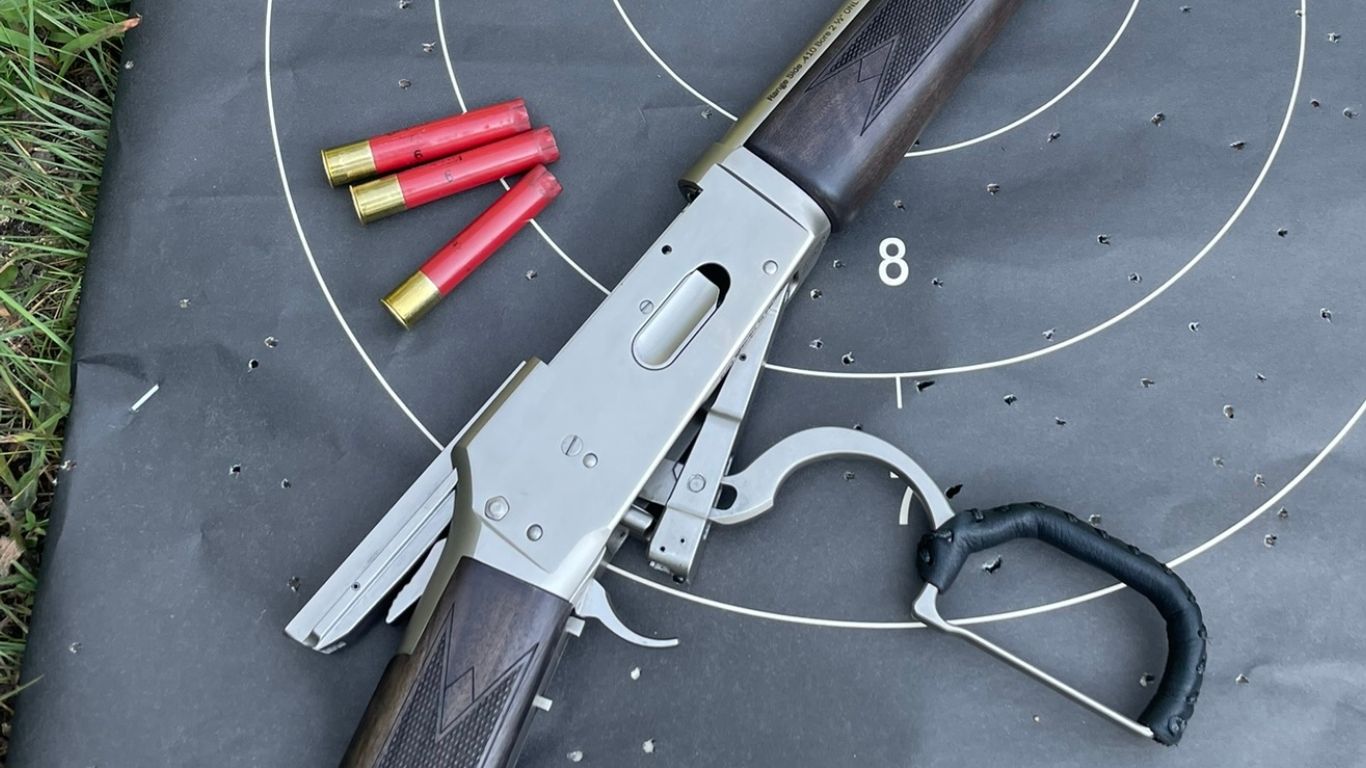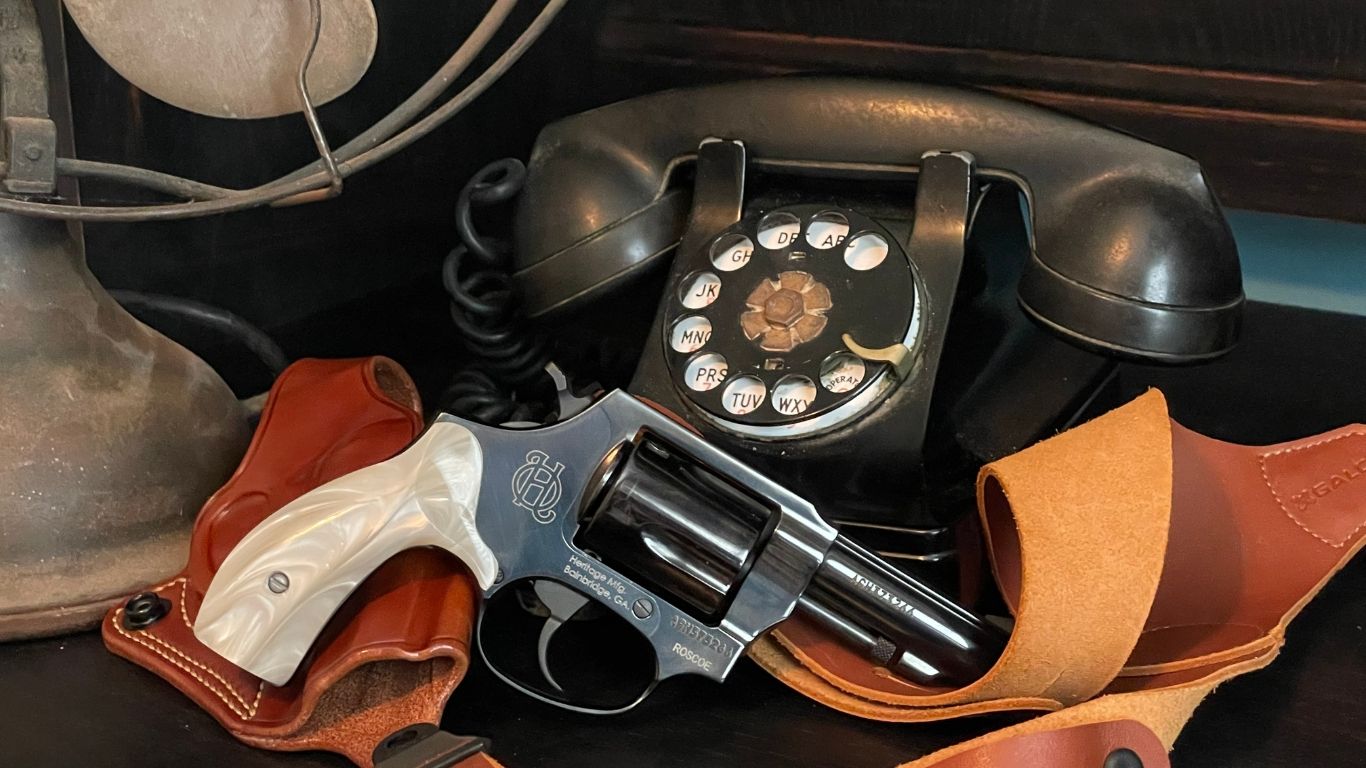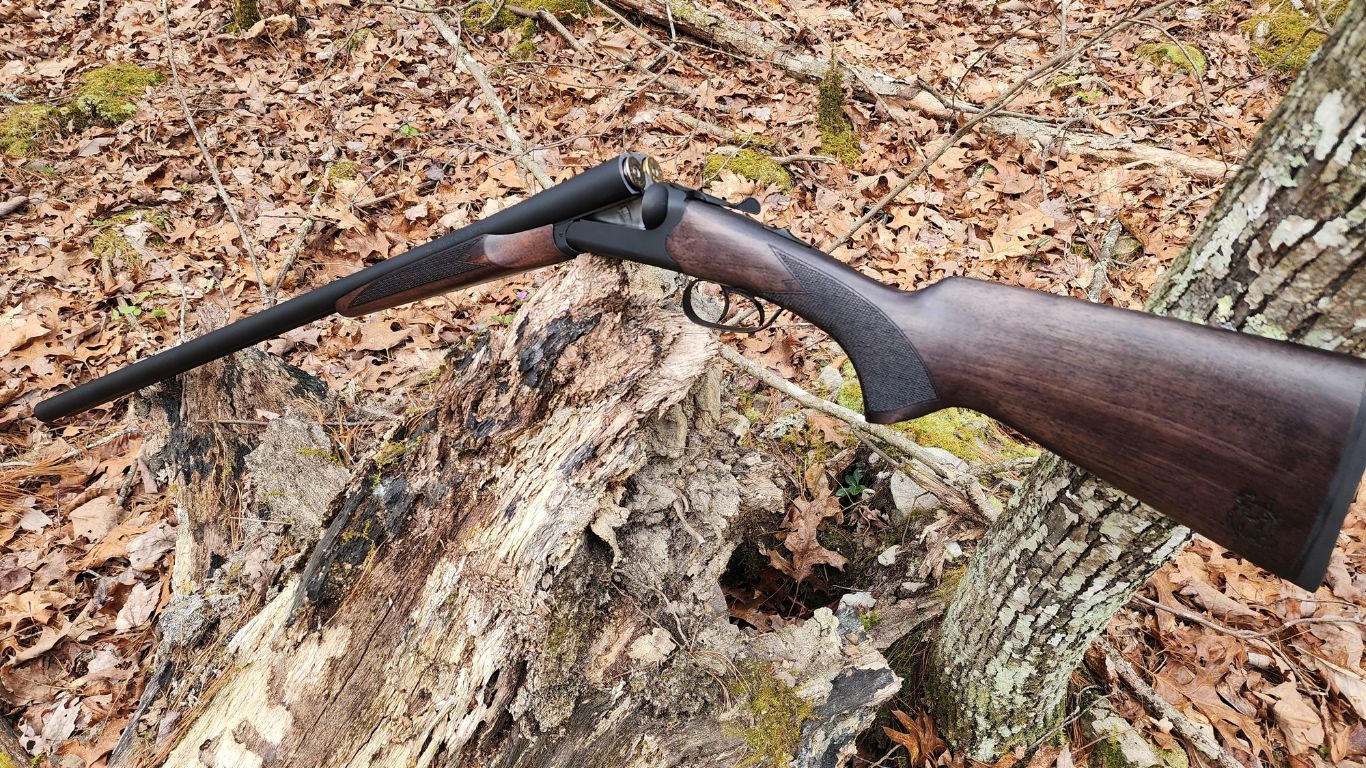The Heritage 92 Ranch Hand is an unusual firearm, a recreation of the sidearm carried by Steve McQueen in a late 1950s – early 1960s TV Western series. The pistol, a sawed-off carbine that was nothing like the guns in any other serialized TV program, captivated me in my youth. Imagine my pleasure at being able to review and test the Ranch Hand version of that gun.
The Mare’s Laig
You may have heard of a Mare’s Leg (or Laig, as the protagonist spelled it) pistol; whether you have probably depends on your age or if you are a fan of a particular Western TV series that originally aired from 1958 to 1961 and starred Steve McQueen. “Wanted Dead or Alive” followed the exploits of a Civil War veteran-cum-bounty hunter named Josh Randall. My late father was a fan of TV Westerns, and I remember as a small child watching “Wanted Dead or Alive,” among other Westerns, with him. I guess as a foretelling of my adult life working with firearms – I really didn’t warm as much to the stories, which as I remember were typical of Westerns of the time, as I did to Randall’s sidearm. Plus that, even at my early age I figured Steve McQueen as a pretty cool character.
In the series, McQueen carried a cut-down Model 92 Winchester lever action carbine as a handgun, and it fascinated me. He gave it the Mare’s Laig name, and used it as a pistol when shooting one-handed. This was back in the days before allowing a tot to play with toy guns was frowned-upon, so my folks bought a Marx Toys Mare’s Laig for me.
Randall (McQueen) carried the Mare’s Laig in an unusual belt holster. Out of leather scraps, my dad created a good facsimile for me of the holster Randall used to carry the outlandish pistol. The TV holster had a hook to engage the saddle ring on the left side of the gun’s receiver, and a u-shaped clamp to hold the gun’s forend near the front barrel band (photo – Steve McQueen and the Mare’s Laig holster), and my holster was a good copy of it. That gun won many imagined gunfights for me, and I popped lots of toy caps at make-believe bank robbers (and, truth be told, at other boys who were also playing at being cowboys). I remember my buddies being a little envious as I was the only one in the neighborhood with a Mare’s Laig toy gun.
With a bit of research, I found an entire magazine article from 1961 about the Mares’ Laig. Volume Five of “Guns Quarterly” has what I think is a fascinating and well-written article by John Lachuk that details the genesis of the Mare’s Laig and a lot of information about McQueen regarding the TV series and the gun. I won’t spoil your enjoyment of the article, if you read it, by repeating what much of Lachuk wrote. I will say that McQueen, when asked why he calls the gun the Mare’s Laig, said, “Because, it’s like a hog-leg only it kicks harder – at both ends!”
Also, according to the article, the show’s producer, John Robinson, conceived of the unusual firearm and wielded a hacksaw and file on three identical carbines to produce what was needed for the TV production, plus a couple of spares. Because of the arcane interpretation of the National Firearms Act by our Federal bureaucracy, because the guns were originally built as rifles they could not be converted to “short barreled rifles” without payment of tax stamps and manufactures licensing fees. Robinson cut the gun’s barrel and butt stock down to where the pistol had an overall length of 19 inches and a weight of 4 ½ pounds. It was chambered in .44-40, also known as the .44 Winchester Center Fire (.44 WCF), that used a .44 caliber, 200-grain lead flat nose bullet. Until the Feds later gave McQueen permission as an employee to possess the gun, he had to practice with it and use it on the lot and location with a uniformed officer present to make sure the gun “was not misused.”
The Heritage 92 Ranch Hand – a worthy successor to the Mare’s Laig
Imagine my surprise when I later discovered there was interest in the old Western series – not only because of Steve McQueen’s ascent into movie fame, but also because of the Mare’ Laig. I didn’t realize that a gun company would build a working, firing re-creation of the Mare’s Laig. It got even better when I was asked for this blog to review one of the current reproductions of the gun, the Heritage 92 Ranch Hand pistol chambered in .45 Colt. (photo – The 92 Ranch Hand with its .45 Colt ammo load) Fortunately, since the Ranch Hand was never a rifle, but was designed and built as a pistol, we can own one without going through the tax stamp horse pucky that the TV show producer had to experience.
Originally, the .44-40 cartridge burned 40 grains of black powder and produced about 1250 feet per second muzzle velocity out of a 24-inch barrel. Later, the cartridges uses smokeless powder, but still retained the “-40” designation. Ballistically, current .44-40 and .45 Colt loads in commercial ammo have similar muzzle velocities for the same weight bullets of similar construction, so my .45 Colt Ranch Hand pistol has about the same performance with live ammo (they used blanks on the TV set) as the original Mare’s Laig.
Apparently, McQueen routinely practiced quick draws of the pistol from the holster, and was able to beat several other stars of Westerns at the time with a draw of 2/5th second. I wore the holster and carried that toy cap gun for several years afterward when I was playing and imagining I was an old West cowboy. I wish I still had that toy and holster, but it disappeared (as did many of my toys) when I went away to the Air Force Academy; aside from its monetary value as an antique, and the personal value of that holster my dad made, I just plain thought the gun was “cool” like McQueen.
I prepped for action with the Ranch Hand by reading the owner’s manual, then checking over the pistol and pulling patches through the bore. The manual warns that users of the gun should not attempt to disassemble it, and it is not good for a long gun’s accuracy to regularly clean it from the muzzle, so a good pull-through is necessary. Also, always make sure the caliber stamped on a gun’s barrel or receiver is the same as the caliber headstamped on the ammunition. The gun is pretty simple to operate, with a large loop lever like the Mare’s Laig. Different than the original 92 Winchester, there’s a rotating safety atop the rear of the receiver, in front of the large spurred hammer.
Selecting ammo for the Ranch Hand caused me to investigate the “.45 Colt” caliber designation, as I found ammo called “.45 Long Colt” as well as .45 Colt. In some cases online, the seller listed ammo as Long Colt, but the photos of the ammunition boxes all showed .45 Colt with no “Long.” There are some online forums that claim there is a difference between the two calibers, but in modern firearms there is no difference because the standards organization, the Sporting Arms and Ammunition Manufacturers’ Institute or SAAMI, standardized the round to one cartridge configuration and one name, .45 Colt.
Range time with the Ranch Hand
After obtaining a couple of boxes of ammunition (CCI Blazer .45 Colt 200 grain JHP and Federal American Eagle .45 Colt 225 grain JSP), I took the Ranch Hand to the range. I didn’t have a holster for it, and even if I did, I wouldn’t have attempted any quick draws. A shooter can easily adjust the buckhorn rear sight for elevation, and drift the front sight post for windage if necessary. I didn’t find it necessary to do either. The trigger was surprisingly good, much better than I expected for the type of gun. Nevertheless, I had a lot of fun shooting the gun from the hip two- and one-handed, but had the best results on target when I lifted the gun up to shoulder lever for aimed shots. For a little while on the range, the old man was able to have fun and imagine being a boy again!
There were no firearm or ammunition failures of any sort while I shot the gun, and I was impressed by the smooth operation of the lever-action system. The only difficulty I had, supposedly typical of a gun of this type with an integral spring side loading gate, was fully inserting the first few cartridges. I had to use the next cartridge in line to push the one being loaded fully into the tubular magazine. It got slightly easier with each magazine load, and should improve significantly by the next range time. Before putting the pistol back in the safe, I wedged an empty .44 Magnum cartridge case between the loading gate and the receiver to help remove some of the spring “set.”
Next up
In a future post about the Ranch Hand, I’ll use a bench rest for an accuracy evaluation, and probably also use a chronograph to compare the velocities produced by the lever-action pistol and by a conventional .45 Colt revolver. So, check back to the blog soon for more about the 92 Ranch Hand.
About the Author
Jason Baird is a retired Air Force B-52 navigator and “rocket scientist” and also, a retired professor of mining and explosives engineering. He owns and operates Loki Incorporated, a successful small business participating in a wide range of energetic materials and ballistic resistance topics and performing test and expert witness services. As a hobby, he enjoys building useful stuff out of wood and steel. He also runs a brush hog on his own property, and enjoys using a wide variety of power tools. Oh, and he’s known as “Dr. Bomb,” or “the Bomb,” to friends










